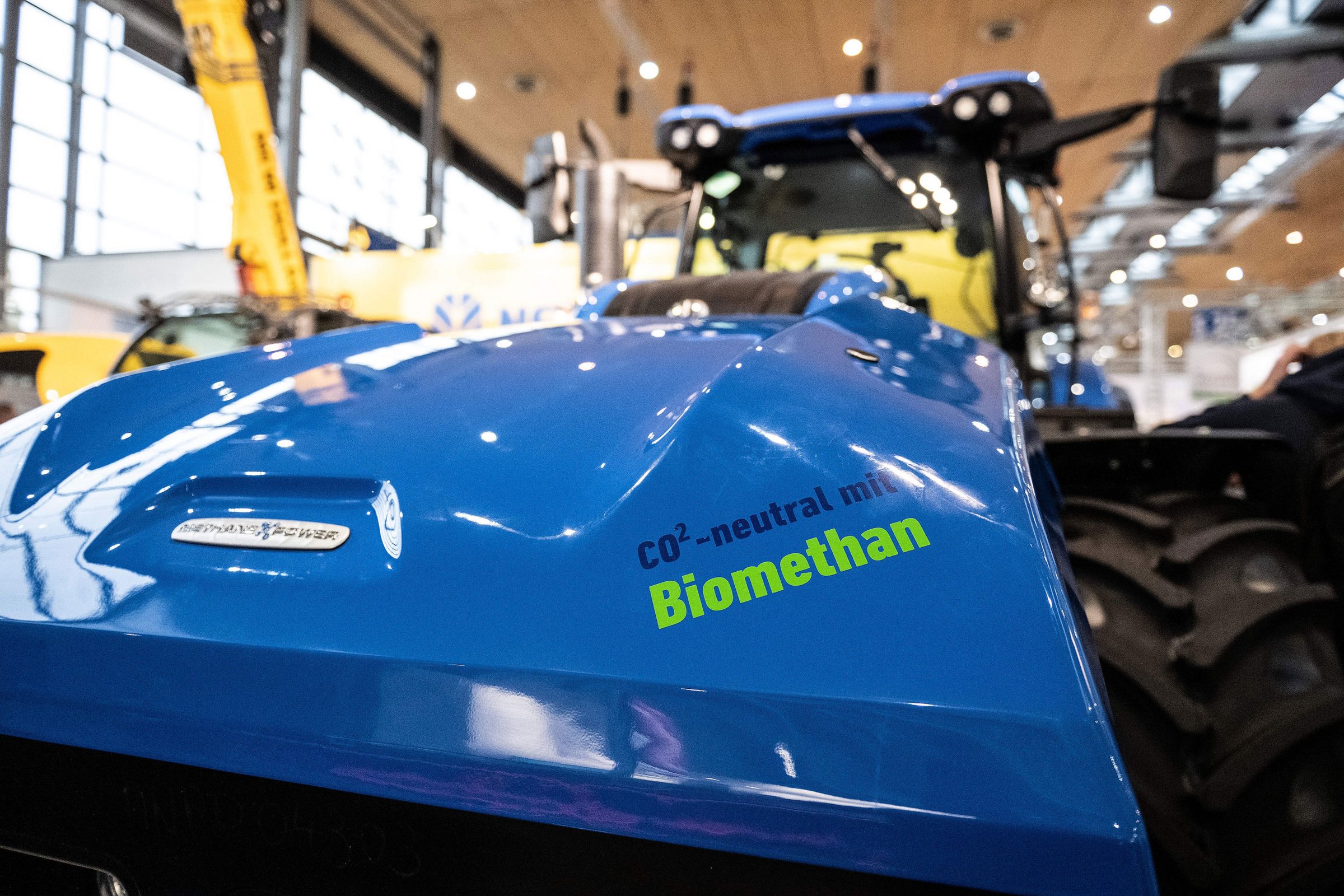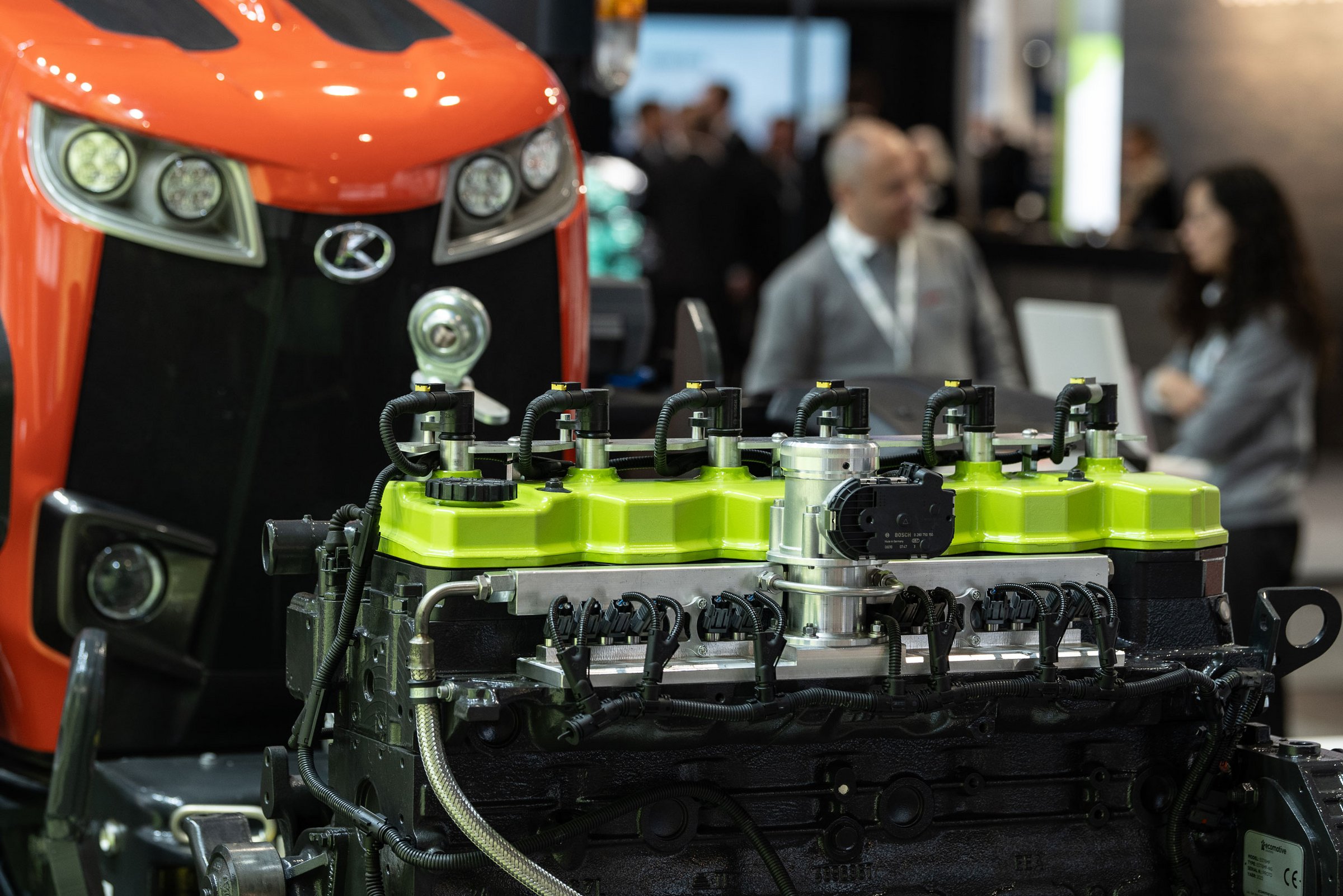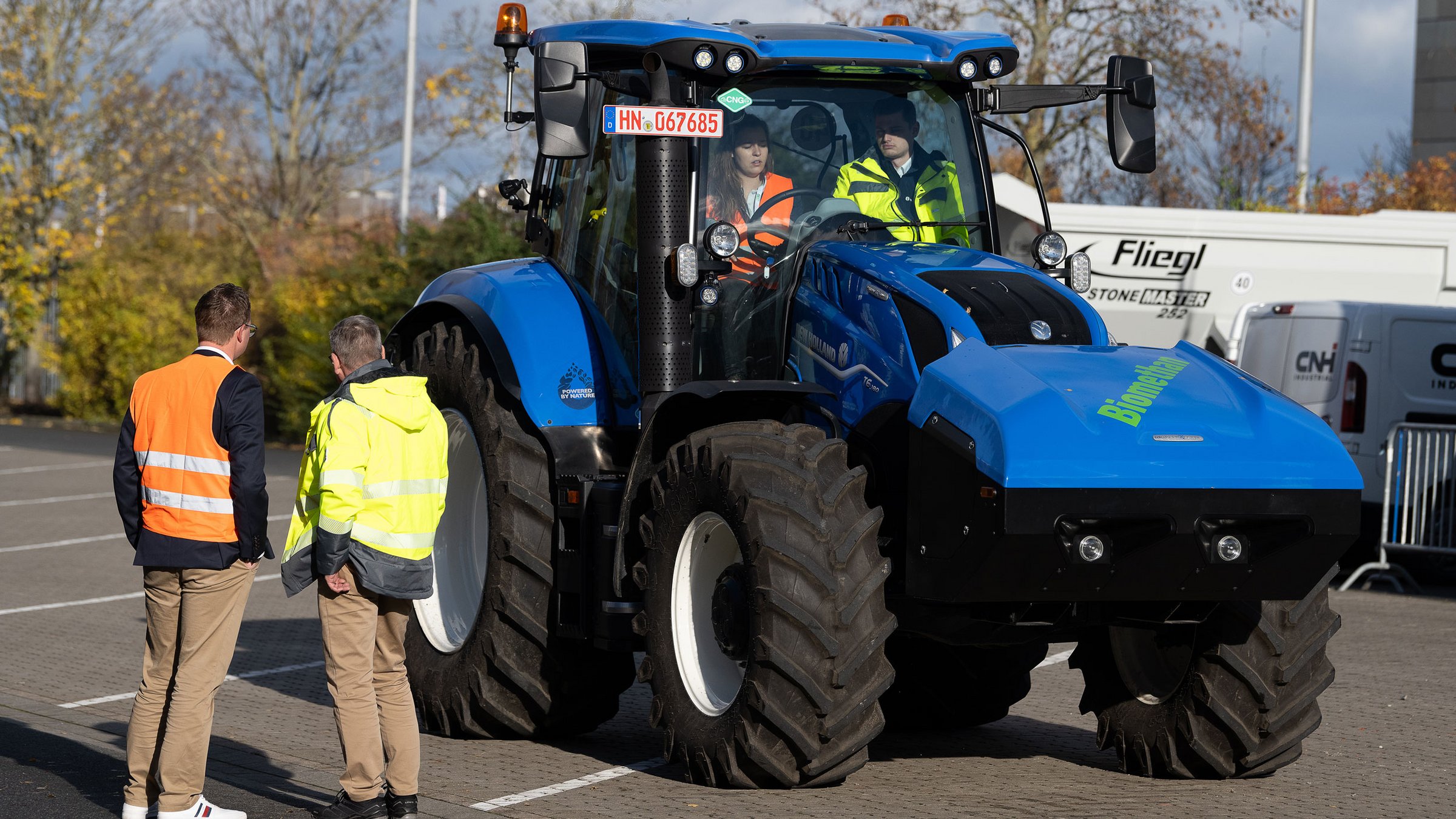Alternative drives: What alternatives are there?
What alternative drives and fuels will power tractors and other agricultural machinery in the future? This is one of the big questions currently shaping agriculture as the end of fossil diesel is drawing to a close. Agritechnica 2025 will provide answers. At the world's leading trade fair for agricultural machinery, manufacturers will present the latest production ready developments and showcase state-of-the-art alternative drive systems for agricultural equipment.
Climate protection targets aiming for greenhouse gas neutrality by 2045 call for a steady reduction in emissions in agriculture. This implies the foreseeable end of fossil diesel fuel, of which around two billion liters are currently still consumed in German agriculture and forestry every year.
All the more reason to explore alternative drive systems in agriculture - solutions that differ from the concepts already on the market in terms of energy source and design. The range spans from engines for environmentally friendly liquid fuels to gas-powered solutions and battery-electric drives.
For manufacturers, the challenge lies in the fact that alternative drives often require a completely redesign of machine architecture, especially for space requirements and weight. In order to guarantee the supply of alternative fuels, considerable investment in the infrastructure of agricultural businesses may also be necessary. Discussions must therefore go beyond the technical feasibility and consider also the operational infrastructure and future energy availability on the farms.

Diesel engine with extensions
Which alternative drives and fuels are an option for agricultural vehicles and which are relevant? One possible approach may be to combine the reliable and economical diesel engine, which has been tried and tested for decades, with a classic drivetrain with extensions and to increase efficiency, for example through electrification or hybridization. However, as this option continues to use fossil diesel, the potential CO2 savings are relatively low.
Diesel engine with alternative liquid fuels
Operating diesel engines with alternative liquid fuels with a more favorable CO2 balance is significantly better for the climate. The main liquid alternative fuels that come into question here are vegetable oil, biodiesel, hydrogenated vegetable oil (HVO) and synthetic fuels. As several fuel options are available in this area, each with its own limitation, this raises question which is the most promising for the future?
Vegetable oil (abbreviation P100) is unmodified and cannot be used in standard diesel engines without adjustments. Due to its higher viscosity compared to conventional diesel, modifications to the engine are required.
In addition to pure vegetable oils, HVO can also be produced from other oil-containing materials such as waste fats, which are processed with hydrogen. HVO shares similar properties with conventional diesel and is considered a drop-in fuel—it can be used in standard diesel engines (with manufacturer approval) without requiring modifications and can be blended with fossil diesel in any ratio.
As such, HVO is seen as a promising short-term solution for improving the CO2 balance of existing engines. However, its excellent properties have made it highly sought after in other sectors, such as construction and commercial transport, which limits its availability. Moreover, current production capacities are insufficient to meet growing demand.
What other options are on the horizon? Looking further into the future, synthetic fuels come into focus. These can power both diesel and petrol engines in a CO2-neutral way. Synthetic fuels are produced from water and carbon dioxide using electrical energy and are available either as a gas (Power-to-Gas, PtG) or as a liquid (Power-to-Liquid, PtL).
However, their major drawback is the extremely energy-intensive production process, which currently limits their scalability and economic viability.

Internal combustion engines for gaseous fuels
In addition to alternative liquid fuels for diesel engines, gaseous fuels such as methane and hydrogen are also being explored for internal combustion engines. Both fuels are gaseous at ambient temperature and standard pressure, meaning they must be either compressed or liquefied to deliver sufficient energy to the engine.
Methane must be cooled below minus 162 degree Celsius to become liquefied natural gas (LNG), while compressed natural gas (CNG) is a less energy-intensive alternative. Liquid hydrogen requires even lower temperatures, making its production more energy-demanding. Alternatively, hydrogen can be stored in pressurized tanks after being compressed to high pressures.
Because the energy density of methane and hydrogen per liter of tank volume is significantly lower than that of liquid fuels, very large tanks are required to ensure sufficient range for a full working day.
Additionally, as with alternative liquid fuels, the carbon footprint of these gaseous fuels is only favorable if they are produced using green energy sources—a process that remains very costly at present.
Electric drive systems
Electrification is gaining momentum in the automotive sector. So why shouldn't everything in agriculture also be electrically powered?
At first glance, the advantage of battery electric vehicles (BEV) offer clear advantages, as the efficiency of electric drives is higher when compared to the combustion engine. However, the key challenge lies in the significantly higher power demands of agricultural machinery. Unlike cars, which only require peak power during acceleration or uphill driving, tractors operate under continuous heavy load during fieldwork—resulting in much higher and sustained energy requirements.
When operating under high energy demands for extended periods, battery-electric systems quickly reach their limits. To supply enough energy for a full working day in large tractors or harvesters without recharging, batteries weighing several tons would be required. These are not only expensive and space-consuming but also increase the risk of soil compaction. As a result, battery-electric drives are currently impractical for such high-power agricultural machines.
For this reason, smaller agricultural machinery with an output not exceeding 100-130 hp are suitable for battery electric systems. Examples include small tractors and loaders. They can be connected to the charging cable during downtimes to recharge the battery.
In addition to battery electric vehicles, fuel cell electric vehicles (FCEVs) are also electrically powered. In contrast to batteries, the electricity in fuel cell vehicles is produced from hydrogen on the vehicle and does not come from the socket as in BEVs. Higher weight and space requirements, complex technology, limited range and high prices are the limiting factors for this technology.
Conclusion
A variety of alternative drive concepts are under consideration for agriculture, but a universal solution like the traditional diesel engine is not (yet) among them. The current range spans from combustion engines using alternative liquid and gaseous fuels to battery-electric vehicles. In contrast, a conventional diesel engine powered by fossil diesel—even when supplemented with electric components—offers little benefit in terms of CO2 reduction.
Multi-fuel engines capable of running on fossil diesel, vegetable oil, or biodiesel—either pure or in any blend—are also being explored. Which technology or combination of technologies will ultimately prevail remains to be seen.
Alternative drives and fuels will be a key focus at Agritechnica 2025. This year, significantly more production-ready or near-series machines will be on display in Hanover than two years ago. Interest will be high, as political frameworks make the transition unavoidable in the medium to long term. For reasons of cost and practicality, farmers are likely to adopt one or two alternatives—provided the technologies are affordable or the additional costs are offset, for example through subsidies.

